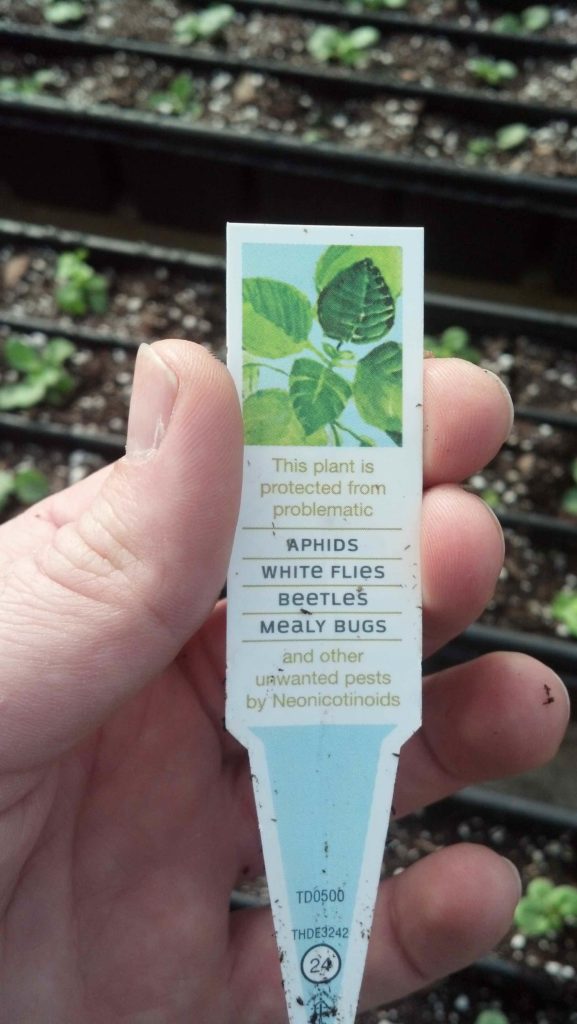Originally posted on ecoipm.org.
Monarch butterflies are worth protecting because they have ecological, aesthetic, cultural, and educational values. Monarch abundance has been declining due, in large part, to destruction of habitats that provide food and winter protection in the US and in Mexico. Luckily monarchs, though not pollinators, caught the attention of President Obama who released the National Strategy to Promote the Health of Honey Bees and Other Pollinators. Monarchs also have the attention of many enthusiastic gardeners, Master Gardener volunteers, neighborhood groups, and others, who are determined to create habitats large and small for bees and other flower-visiting insects.
Unfortunately, pollinators came to national attention due, in part, to concern that neonicotinoid insecticides may be harmful to them. This spring, concern for monarchs and concern about neonicotinoids have collided.
The shrapnel from this collision has been thousands of frantic emails condemning retailers for selling milkweed plants treated with neonicotinoids and warning consumers against buying them.
I am not in the “neonicotinoid-good” or “neonicotinoid-bad” camp. Neonicotinoids are tools, like all other insecticides (that can also kill pollinators by the way), and my job is to help nursery and greenhouse growers, landscapers, and others use these tools responsibly. I will try to unpack some of the concerns and issues related to this monarch situation.
In many emails the
concerned consumer knows plants have been treated because there is a tag in the plant stating as much. These tags are a result of consumer pressure and is there to give consumers a choice. If you don’t want it, don’t buy it.
Of course the bigger concern is that if millions of people are buying millions of milkweed plants that have been treated with neonicotinoids how does this affect monarch populations?
First, neonicotinoid insecticides are not recommended for killing caterpillar pests such as hornworms or cankerworms. Why? Because they do not kill caterpillars very well. This should reduce concern.
Second, as plants grow the neonicotinoids in them become diluted. Therefore, if you buy a treated plant it will not contain neonicotinoids forever and possibly not for very long. So, a permanent feeding patch for monarchs will be a beneficial resource even if you create it using treated plants (much may not kill caterpillars).
Resources you may like to peruse
Fact sheets about protecting pollinators in urban landscapes:
- http://msue.anr.msu.edu/news/planting_garden_center_flowers_is_good_for_bees_and_other_beneficial_insect
- http://msue.anr.msu.edu/news/how_to_protect_pollinators_in_urban_landscapes_and_gardens
- http://msue.anr.msu.edu/news/smart_lawn_care_to_protect_pollinators
- http://ecoipm.org/2017/01/27/new-bee-bmp-summary-from-hri/
Native pollinator resources on ecoipm.org



